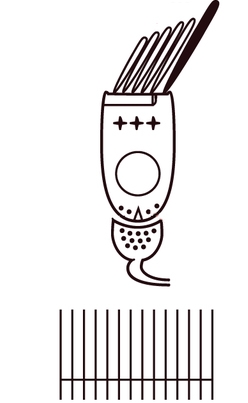The central neural networks which generate the commands that hold eye positions steady are commonly viewed as mathematical integrators1.
For example, for a saccade to be accurate, the velocity of the saccade (pulse innervation) must match the final ocular position maintained after the saccade is complete (step innervation). The process of matching the pulse and step components of a saccade is referred to as neural integration: the saccadic step, an eye position command, is created from the pulse (an eye velocity command) by a neural network that integrates, in the mathematical sense, conjugate eye-velocity commands into the appropriate position-coded information for the ocular motoneurons.
The neural integrator an important component of the normal gazeholding mechanism, maintaining eccentric gaze2.
With respect to the interaction between the vestibular system and eye movements, as an example, during rotation of the head to the right, primary afferents from the right horizontal semicircular canal increase their firing rates. This increase in activity is carried by excitatory neuron projections via the vestibular nuclei to both motor neurons and internuclear neurons in the left (contralateral) abducens nucleus. Ultimately, these oculomotor neurons encode the position and velocity of eye movements3.

If the head stops rotating before the eyes reach their limits, elastic forces in the eyes and surrounding tissue would draw the eyes back to the midline. Therefore to ensure that the eyes are kept on target after the head movement is terminated, there is an additional indirect pathway (distinct from the direct pathway to the ocular motoneurons). This pathway takes the phasic signal from the vestibular nucleus and sends it to the nucleus prepositus hypogossi, (which lies medial to the vestibular nuclei), where it is transformed into a tonic, position-related signal. The tonic signal is then sent to the abducens nucleus so it too can be transmitted to the eye muscles. This is critical for keeping the image stable on the eye when the head movement is terminated.
In summary, semicircular canal signals reach the motor neurons through a set of two parallel pathways (Figure 2):
- A direct route through the vestibular nuclei (three-neuron arc)
- An indirect pathway that functions as a neural integrator, and which is made up of cells in the prepositus hypoglossi, the medial vestibular nuclei, and the cerebellum.
Through these pathways, a pulse of head velocity is converted into a sustained change in eye position (solid red line in figure below). Without the integrator pathway, eye position would decay to zero within a few hundreds of milliseconds with the eyes drifting back, since the motor neurons lack the tonic component to compensate for the elastic restoring forces of the eyeball (dashed line in red, right side of the figure below)
The presence of both direct and neural integrator parallel pathways ensures that the correct proportion of velocity and position commands is delivered by the brain to the eye and its muscles at all frequencies of natural head movement.

Figure redrawn from Angelaki, D. E. (2009). Vestibulo-Ocular Reflex. In Encyclopedia of Neuroscience (pp. 139-146). Elsevier Ltd.
Stable gaze holding is achieved by the neural network within the brainstem and cerebellum of the neural integrator which takes velocity commands from the conjugate eye movement systems and creates a position command to hold the eyes steady after every movement. This neural network must integrate the signals which encode the velocity of eye movement commands (such as saccades, smooth pursuit, or the vestibular ocular reflex), into position commands for holding the eyes still, to ensure accurate and steady gaze holding. The motor neurons receive the direct command encoding the velocity of the desired movement and the position command from the output of the neural integrator4.
To reiterate, in addition to being an important component of the VOR, velocity–position integration is required by a number of subsystems related to oculomotor control. All types of eye movements, including the saccadic and smooth pursuit systems, slow phases of nystagmus, and vergence, use a pulse-step of innervation 2,5.
With respect to neurons that carry eye position (step) signals to maintain accurate and sustained gaze-holding, :
- For horizontal movements, the neural integrator consists of the medial vestibular nucleus and nucleus prepositus hypoglossi (also termed the accessory nucleus of CN 12) in the medulla.
- For vertical and torsional movements, the neural integrator is the interstitial nucleus of Cajal in the midbrain.
Shown are the neural networks located largely in the medulla for horizontal movements and in the midbrain for vertical movements respectively.
The PPRF contains neurons that project directly to the CN 6 nucleus as well as neurons that project to the neural integrator prior to innervating the CN 6 nucleus, enabling pulse–step integration of horizontal saccades.

Redrawn from: Clinical Examination of the Ocular Motor and Cerebellar Ocular Motor System. Strupp, M. https://www.youtube.com/watch?v=meXAjVoQdCI
The cerebellum contributes to the function of the neural integrator, and lesions of the flocculus-paraflocculus complex interfere with its function. The integrator may become impaired or ‘leaky’, causing a gaze-evoked nystagmus with velocity decreasing slow-phase wave forms, or become ‘unstable’, in which case the slow-phase wave forms are velocity increasing6.

